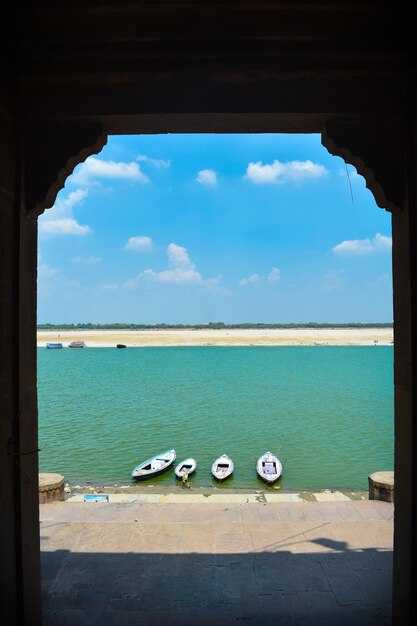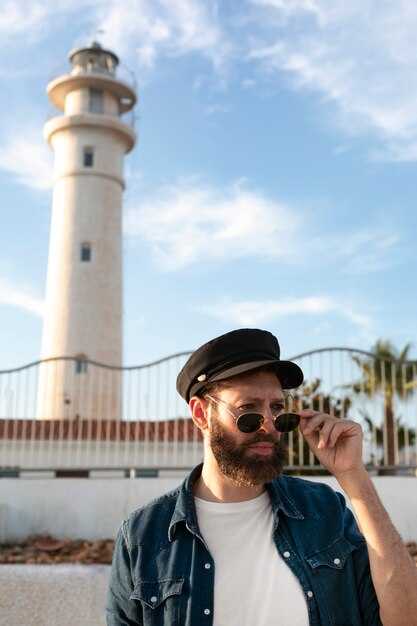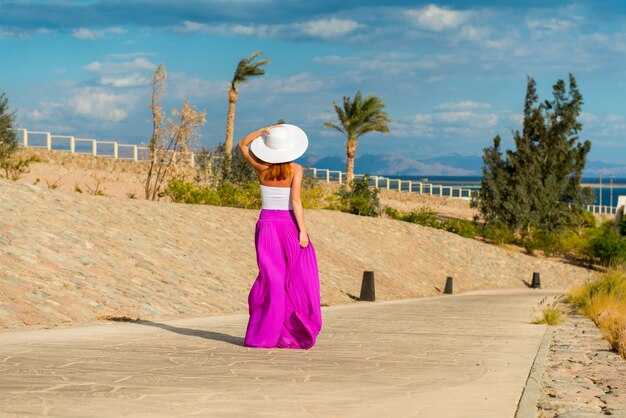Book a sunset stroll along the seaside Corniche to anchor your Casablanca impression from day one. Its white façades shimmer above the Atlantic, and the atmosphere across the citys cafés and markets answers your subject: what makes this 目的地 tick.
Within a few blocks you’ll feel the contrast between the old medina and the contemporary districts. The sites span centuries: Islamic mosques beside glass-fronted galleries. In the Habous quarter you’ll notice a traditional house and arcades, while Maarif and Anfa showcase a feature of modern life with cafés, shops, and co-working spaces. Lodging comes in types that suit both price and style, from guesthouse to boutique hotels.
april offers the best balance of sun and breeze for outdoor strolls and street photography. If you travel by air, direct flights from york-area hubs land at Mohammed V International, then a 30–40 minute ride brings you to the city center. When budgeting, check the currency and plan for meals and transit; a mid-range lunch costs roughly 60-100 MAD, and a taxi within the city runs around 40 MAD.
Casablanca’s atmosphere lingers as you wander markets, coffee houses, and modern art sites. The destination also reveals their Islamic heritage through grand mosques and quiet courtyards. Favor a coastal sunset from the white towers of the waterfront, then explore the art scene and contemporary galleries that define the new Casablanca.
Best Time to Visit Casablanca: Weather, Crowds, and Event Calendar
To maximize comfort and value, visit Casablanca in late spring (April–May) or early autumn (September–October). These windows offer longer daylight, mild highs around 20–24°C, and sea breezes that keep waterfront strolls calm. Expect 5–7 hours of sunshine most days; water temperature around 17–21°C makes the seaside enjoyable without the peak heat. This timing suits explorations of the largest coastal centers, while avoiding peak crowds.
Casablanca’s climate delivers milder winters than many North African cities. Winter highs range 12–17°C with occasional rain; spring and autumn hover 18–25°C, while summer peaks at 28–32°C with a dry, comfortable sea breeze. Seawater sits in the 17–22°C band for spring through summer. The city feel can be calm most days, and its gorgeous skyline blends traditional arches with modern glass, a look similar to other world-class coastal capitals above the Sahara. For updates on weather, crowds, or events, check the internet before you go.
Crowds and budgets: July and August bring the highest occupancy near the Seaside Corniche; shoulder seasons reduce traffic around sights and keep prices reasonable. If youve only a few days, plan a private driver for day trips to the medina’s narrow lanes and the newer centers. You can sample several types of experiences, from seafood by the sea to private gallery tours, and taste Moroccan coffee, mint tea, and sweets. Today, arrivals by plane land at Mohammed V Airport with smooth transit to the city center, and you’ll find an impressive range of hotels that match a calm, cosmopolitan lifestyle. If youve got a limited window, choose a compact itinerary that minimizes backtracking and maximizes time along the seaside, with evenings in lively districts where you can feel the city’s rhythm.
Event calendar snapshot: March–April highlights the Jazzablanca festival, bringing world-class jazz to seaside venues; May–June showcase gallery openings and pop-up markets that emphasize local and Caribbean-inspired flavors; July–August offer open-air concerts and cinema nights along the Corniche; Ramadan brings evening Iftars, night markets, and cultural performances; September–October focus on theatre and film screenings at Alliance Française and MAJ, plus private celebrations in historic venues; November–December wrap with year-end private concerts and seasonal tastings that celebrate Casablanca’s diverse dining scene. This schedule covers types of experiences across arts, food, and nightlife, so you can plan a balanced visit around music, culture, and taste.
Where to Stay: Casablanca Districts for Budget, Midrange, and Luxury
Maarif is the best base for most travelers: it balances price, easy access, and culture. private apartments and sample hotels sit within a short walk of Moroccans-friendly cafes, transit lines, and a living street scene. Details like courtyard spaces and quick links to the south coast make it simple to go out in the afternoon, then return to a comfortable room that feels welcoming rather than generic. You know this area is well connected to the city’s sights, and locals told us the points of easy access to the old town are a real plus.
For a coastal, easy-going vibe with strong views of the Atlantic, consider the La Corniche around Ain Diab. Contemporary hotels line a rocky promenade, and the south-facing beaches invite you to an afternoon stroll with café stops and private balconies. It’s an easy choice if you’re going for beach clubs, casual dining, and a transatlantic-inspired mood–almost like a Funchal-style promenade with a Moroccan twist–and you’ll still be able to reach central districts in a short ride.
If you’re seeking quiet luxury and privacy with broad ocean views, Anfa and the nearby hills offer the best fit. The living spaces here tend to be larger, with private terraces and thoughtful design that suits longer stays. It’s the most suitable option for travelers who want a stage of comfort after busy tourist days, with easy private transport and fewer crowds while staying close to major sights.
Budget-friendly districts

Central areas around Maarif and Sidi Belyout deliver the best value for budget-conscious travelers. Expect budget-friendly hotels, guesthouses, and private studios that still provide good wake-up service, basic breakfast, and easy cafe culture. The walking radius between the old medina’s charm and modern cafes makes it simple to sample Moroccans culture without sacrificing convenience. If you’re planning to see classic sight like the Hassan II Mosque, these districts keep you in easy striking distance while leaving room in your budget for tickets to popular attractions.
Midrange and Luxury picks
Gauthier and the Downtown zone offer a mix of contemporary style and convenient access, ideal for travelers who want more comfort without overspending. Prices stay reasonable, and you’ll find stylish cafes and private living spaces that feel like a home base for exploring between afternoon coffees and late dinners. For luxury with privacy, Anfa and the La Corniche stretch give you sea views, quieter streets, and upscale bars, while still keeping walking routes to the city’s cultural points. Moroccans and visiting tourists alike appreciate the balance here, and many guests were happy with the ease of arranging private transfers and tickets to major attractions in advance.
| 地区 | Suitability | Typical price (USD/night) | ハイライト | Transit tips |
|---|---|---|---|---|
| Maarif | Budget to midrange | 40–110 | Central cafes, easy access to transit, local culture | Walk to major tram stops; short ride to tourist sights; private options available |
| Ain Diab / La Corniche | Midrange to luxury | 70–300 | Coastal views, rocky promenade, contemporary cafes | Taxis or short rides to downtown; best for afternoon and evening outings |
| Anfa | Luxury | 150–400 | Private, quiet streets, sea views, upscale amenities | Car recommended for flexibility; limited public transport nearby |
| Gauthier | Midrange | 60–150 | Cafes, cultural vibe, easy walking to central sights | Walkable routes to tourist points; good mix of private and apartment options |
| Downtown / Sidi Belyout | Budget to midrange | 40–120 | Historic architecture, close to major sights, busy local life | Excellent transit links; easy to switch to other districts |
Must-See Landmarks: Hassan II Mosque, Old Medina, and Modernist Architecture
Begin with Hassan II Mosque, opened in 1993, a colossal seaside landmark that offers breathtaking views and a museum-filled approach to religious architecture. The 210-meter minaret dominates the Atlantic shoreline, and the site provides a stage for evening light and the excitement of standing where art and faith meet. Inside, guided tours reveal carved marble, mosaic tiles, and a glass floor that lets you glimpse the ocean below. Entrance is via a ticketed visit, and the surrounding precinct provides spaces to reflect on this land’s faith, artistry, and present-day life.
Next, step into the Old Medina, an ancient labyrinth where the souk hums with traders and aromas. Visiting the maze-like lanes, you find stalls offering spices, leather, copper, and delicious pastries. The atmosphere is partly chaotic and partly intimate, with quiet courtyards behind carved doors. For example, tiny bakeries turn out cookies and mint tea that tempt you as you move from stall to stall. You can find artisans at work, and this historic area offers palaces and quiet corners that reveal centuries of urban life.
Finally, explore Casablanca’s Modernist Architecture, uniquely preserved and clearly visible across the city. This style presents bold concrete geometry, smooth curves, and terraces that catch the Atlantic breeze. The main boulevards host example buildings that were opened during the city’s rapid growth in the mid-20th century. You can find interiors repurposed for offices, galleries, or cafés, providing a live sense of that era. This stage of development partly explains why the modernist forms feel so present today.
Getting Around: Metro, Trams, Taxis, and Practical Transit Tips
Metro and Trams
Use the tram for most daytime trips. Casablanca’s tram network links central districts with coastal areas and runs from early morning until late evening with frequent intervals. Buy tickets at machines near each stop or at staffed booths, then validate before boarding. A single fare is inexpensive, and a multi-ride pass can save time on longer stays.
Taxis and Practical Tips

Official taxis are easy to spot near major squares, hotels, and transit hubs. Confirm the fare before departure or ensure the meter is in use; most journeys within the core zones stay affordable. Avoid unlicensed vehicles, especially after dark, and consider booking through your hotel or a reputable service to minimize delays.
Other options include local bus routes that reach outlying neighborhoods and seaside promenades. Keep a simple map in your pocket, and ask staff at your accommodation for current routes and recommended stops to limit detours. For luggage or larger gear, prefer larger taxis with sufficient space, and plan ahead when making plans that involve longer rides.
Eating and Drinking: Local Dishes, Markets, and Coastal Dining
Begin with a beachside bite: grilled sardines with chermoula at a cafe along Ain Diab. This easy starter pairs with olives and a lemon-olive oil dip. When traveling, youd feel the rhythm of the coast as you start a flavor trail.
Next, head to Marché Central and the bustling harbor zone for market details. Here you can sample olives, preserved lemons, harissa, dried figs, almonds, and fresh herbs. Pick a few items to bring home and build an archive of flavors you can recreate later near your hotel.
Casablanca’s seafood-forward dishes anchor many meals: tagine with seafood, grilled seabream, and octopus with olives. Pair a light tomato-onion salad or a minty cucumber salad, then consult the cafe menu for a quick sample of regional twists from the coast.
In the attarine quarter, spice shops stack jars of cumin, coriander, cinnamon, saffron, and orange blossom water. This location often hosts tiny tastings where you can compare blends side by side and decide which one to take for your home. The flavors evoke Granada’s spice heritage and long trade routes.
Coastal dining shines along Ain Diab and the Anfa coastline. Bustling beachfront restaurants offer grilled fish, seafood couscous, and scenic Atlantic views. A one-way taxi from the center to the shore is easy, and you’ll pass colorful houses and palm-lined promenades that welcomed many travelers. For a sweet finish, try almond pastries from a nearby cafe before you catch a plane ride later. If you have extra time, a weekend drive to ouidane lake offers a serene contrast to the coast.
For a structured day, follow a food trail from the center to the coast, stopping at a market stall, a cafe, and a seaside restaurant. Each stop reveals details about the local palate–olive oils, cherry tomatoes, and fresh bread–and you can carry another idea home for your traveling notes. The archive of memories from these explorations stays with you after you leave.
Traveling readers with a taste for explorations will find easy options: a morning market run, a quick coastal lunch, and an afternoon visit to a harbor cafe. You will be welcomed by warm service and a bustling scene that makes the city feel like an archive of original recipes–from olives and olive oil to sesame sweets and grilled seafood.
Coastal Experiences and Short Trips: Ain Diab Beach, El Jadida Day Trip, and Rabat Nearby
Ain Diab Beach delivers an immediate dose of Casablanca’s seaside energy. The coastline runs long along a bustling boardwalk where surfers ride the morning swells and street musicians fill the air with sound. Cafés and roasters spill onto the rocks, so you can grab a coffee or a light meal at a restaurant while watching the sun rise. There, nightlife sensibly shifts into evening with open-air lounges and music along the promenade. A cool elsa breeze drifts along the coastline, keeping you comfortable as you explore. If you drive, park near the corniche and take a short walk to soak in the views.
El Jadida Day Trip offers a compact coastal escape, with driving there taking roughly 1.5–2 hours from Casablanca depending on traffic. The walled city sits on a rocky coastline and preserves a UNESCO-listed Portuguese fortress. Inside the cistern and fortress walls, you can meet local guides who explain the maritime history while you taste seafood and local food at a harbor restaurant that serves specialty dishes. The seaside promenade invites a longer walk, and you can take photos of the azure Atlantic and the ramparts. For a complete experience, an optional guided walk includes the Jewish quarter and the old merchant houses. A voucher can cover a lighthouse stop or a harbor lunch, making it a well-rounded half-day adventure.
Rabat Nearby offers a multicultural counterpoint to the beach days. The drive is about 1.5 hours, and Rabat’s center blends grand monuments and modern cafés. Head to the Kasbah of the Udayas for blue-and-white lanes, then visit the Hassan Tower and the Mausoleum of Mohammed V. The coastline and the riverfront offer a long stretch for an easy walk. Open-air gardens and a botánico corner provide a quiet pause–for families or travelers who want a slower pace. You can sample Maghreb specialties at a center restaurant near the medina; there are plenty of seafood options along the seaside. If you have time, book a voucher-based guided tour that includes the mosque and coastal views, which makes the whole trip smoother.
Premium Spain Morocco: Tips for a Smooth Coastal City Experience
Book a premium seafront room for your first night and step onto the Ain Diab promenade within minutes. This keeps your schedule tight, your energy high, and your heart in Casablanca’s beautiful coastal rhythm–perfect after a pandemic-era reentry to travel.
Casablanca blends Moroccan charm with European touches, delivering a capital-like energy along the Atlantic. Use these practical moves to craft smooth days and easy evenings.
- Where to stay
- Choose a premium hotel along the corniche or in Ain Diab with rooms that offer balconies and strong wifi.
- Prefer properties with an on-site restaurant and a patio or terrace to enjoy the sea breeze at sunset.
- Ask for sea-facing rooms to capture beautiful sunsets, just minutes from the heart of nightlife and dining.
- What to do
- Stroll the coast from Ain Diab to nearby cafés with patios, then pause for an ice-cold mint tea as the evening light softens.
- Explore the medina for a Nejjarine-inspired courtyard feel in refurbished spaces andcatch moments in those quiet corners.
- Take a short trip to Pastilla for a different coastal rhythm, then return to the city for nightlife that stays active well into the night.
- Seek out artful spaces that echo thyssen-bornemisza vibes in their lobby décor, offering a refined backdrop for photos and conversations.
- Where to eat
- Pick a premium restaurant along the corniche for fresh seafood, Moroccan tagines, and modern twists that pair with Atlantic sunsets.
- Try tapas-style plates to catch spains influences in a casual setting, then finish with mint tea on a quiet patio.
- Reserve a table for evening dining near the heart of the action to avoid crowds and enjoy attentive service.
- Practical planning
- Book popular spots in advance; in peak seasons those reservations prevent slowdowns and ensure smooth access.
- Plan transfers from the airport within 20–40 minutes, depending on traffic, to maximize time on the coast.
- Carry a lightweight scarf or shawl for breezy evenings, especially along the water in late hours.
- Within a few days, map a loop that includes a beach stroll, a museum visit, and a long dinner–includes a balanced mix of free time and guided experiences.
- Art and ambiance
- Look for rooms and lounges with thyssen-bornemisza-inspired interiors to elevate the travel vibe.
- Notice sagrada-inspired façades on cafés and boutique hotels, which add a calm, sacred touch to your coastal stroll.
- Several venues offer beautiful, intimate patios where you can linger after sunset and watch the city lights come alive.



コメント